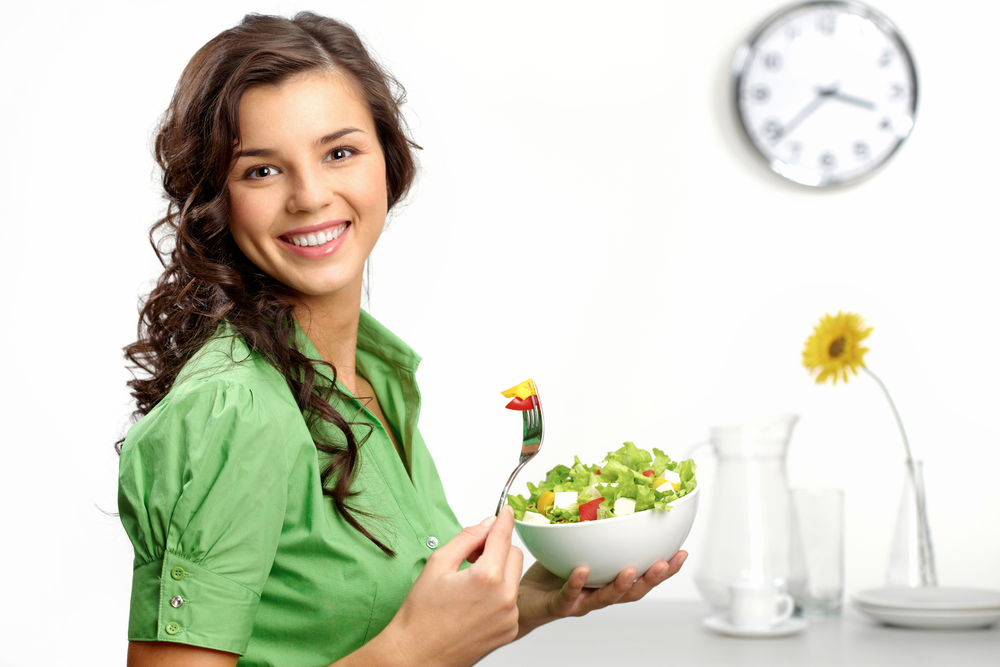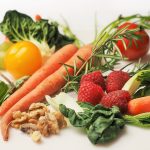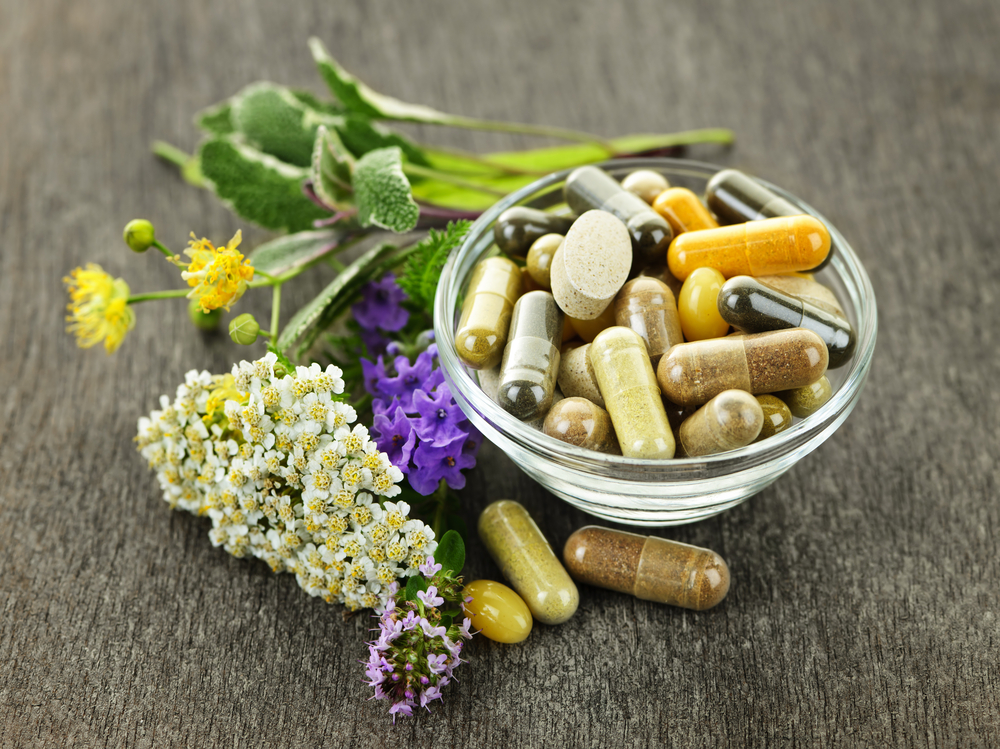Getting enough fiber is important for your health. In other words, it generally makes for a better poop. It helps with weight loss by reducing constipation.
A plant-based diet may also have cholesterol-lowering benefits, as well as reducing your risk of developing diabetes or heart disease. Additionally, some types of fiber promote the growth of healthy gut bacteria, and may improve digestive health.
Yet most people aren’t getting enough fiber. It is recommended that women consume 25 grams of fiber per day, and that men consume 38 grams per day. The average American only consumes around 16 grams of fiber per day, which is less than the recommended amount.
1. Eat Whole-Food Carb Sources
Fiber is a type of carbohydrate found in plant-based foods. Fiber is a type of carbohydrate that is not broken down into sugar when digested. Most other carbs are broken down into sugar during digestion. If you eat fiber with other carbs, it helps you feel fuller for a longer period of time.
This also prevents the quick absorption of carbs into your bloodstream, which helps to regulate blood sugar levels. Whole-food carb sources all naturally contain fiber. These include fruits, starchy vegetables, legumes, and whole grains.
When you choose whole foods, you are choosing foods that contain carbohydrates with fiber. Choose a variety of beans, whole grains, fruits, and vegetables.
There are many benefits to eating vegetables. They are a good source of vitamins and minerals, they are low in calories, and they can help you lose weight. They can lower your risk of several chronic diseases. Vegetables that are low in starch content are especially low in calories, but high in essential nutrients like fiber.
Starting your meal with vegetables is a good way to eat more of them.
A study found that women who were given salad 20 minutes before a meal ate 23% more vegetables than those who were served salad at the meal. If you want to eat fewer calories during your meal, try eating a salad or vegetable soup before your meal.
You can increase your fiber consumption by eating vegetables before a meal. Non-starchy vegetables are a low calorie, high fiber choice.
3. Eat Popcorn
Popcorn is one of the best snack foods around. A single ounce of quinoa provides 4 grams of fiber. That’s 3 cups of air-popped popcorn.
If you want the lowest calorie popcorn, you should either cook it in a brown paper bag in the microwave, or use an air popper. For more flavor without adding fat or calories, sprinkle it with cinnamon, and if you like things spicy, add a little cayenne pepper.
Air-popped popcorn is a good source of fiber, with over a gram in each cup. Snacking on popcorn is a great way to get your daily intake of whole grains while also enjoying a tasty treat.
Each serving of three cups of the kernels contains 3.5 grams of protein as well as polyphenols that may help to prevent cancer.
4. Snack on Fruit
Fruit is a great snack because it is tasty and portable. Although all fruit delivers fiber, some have significantly more than others.
For example, one small pear has almost 5 grams of fiber, while a cup of watermelon has less than 1 gram. Berries and apples are other high fiber fruits. The fiber from fruit can help with feeling full, especially when combined with food that contains fat and protein, such as nut butter or cheese.
Fruit is an excellent snack food. High fiber fruits include pears, apples, and berries.
5. Choose Whole Grains Over Refined Grains
This can be done by milling the whole grain to produce a flour, either with the germ and bran or without. Whole grains can be milled into a flour with the germ and bran intact, or without. In contrast, unrefined grains still contain their vitamin-containing germ and fiber-rich bran.
The grain is not as nutritious because the most nutritious parts have been taken away, leaving only a fast-absorbing carb. At least half of the grains in your diet should be replaced with whole grain versions. In addition to oatmeal or brown rice:
Whole grains have the germ and bran still attached to them, making them more nutritious than refined grains.
6. Take a Fiber Supplement
Fiber is best obtained through food rather than other sources. If you are not getting enough fiber in your diet you might want to take a fiber supplement.
A few types of supplements have research to back them up:
- Guar fiber: As a supplement, guar fiber may improve fullness and lower your overall calorie intake. It’s also used in processed foods to improve texture.
- Psyllium: This is the key ingredient in Metamucil, a popular fiber supplement used for constipation. In one study, psyllium was also shown to decrease hunger between meals.
- Glucomannan: This fiber is added to some low fat dairy products to improve texture, and it’s the main ingredient in no-calorie shirataki noodles. As a supplement, it increases fullness and reduces appetite.
- β-glucans: This type of fiber is found in oats and barley. It’s fermented in the gut and acts as a prebiotic to support the healthy microorganisms that live there.
However, supplements have two main drawbacks. First, they can cause stomach discomfort and bloating. You can reduce constipation by gradually introducing a fiber supplement and drinking more water.
In addition, these supplements can prevent the absorption of certain medications. Before taking a fiber supplement, speak to a healthcare professional if you are taking any medications.
7. Eat Chia Seeds
Chia seeds are nutritional powerhouses. This food provides omega-3 fatty acids, protein, vitamins, minerals, and about 10 grams of fiber per ounce.
These small seeds thicken in water and are up to 93% insoluble fiber. Fiber that cannot be dissolved in water is important for keeping your digestive system moving and is necessary for maintaining a healthy colon. It’s also linked to a lower risk of diabetes.
Chia seeds contain insoluble fiber, which helps with digestion and could lower your risk of diabetes.
8. Eat Whole Fruits and Vegetables, not Juice
Juicing is a good way to incorporate a lot of vegetables into your diet, say proponents. Indeed, juice can have high amounts of micronutrients.
Even though unpasteurized, cold-pressed juices have not been stripped of fiber, they still contain a concentration of carbs in the form of sugar.
Although vegetable juices have less sugar than fruit juices, they have significantly less fiber than if you were to eat whole vegetables. You will reap more benefits from eating whole fruits than from drinking 100% fruit and vegetable juices.
Fiber and sugar levels in fruits and vegetables differ depending on whether they are eaten in whole form or as juice. Juice generally contains less fiber and more sugar than its whole form counterpart.
9. Eat Avocados
Avocados are incredibly nutritious fruits. The avocado’s green, creamy flesh is not only high in healthy, monounsaturated fatty acids, but is also packed with fiber.
This means that half an avocado provides 5 grams of fiber. Avocados may help to lower the risk of developing metabolic syndrome, a condition associated with an increased risk of heart disease, stroke, and type 2 diabetes.
An avocado can be used as a healthier alternative to butter, or as a topping for salads and other dishes.
Avocados are rich in monounsaturated fats and fiber. Healthier than many other types of fat.
Swap mayo for avocado in sandwiches.
A good sandwich needs a creamy spread to balance out the flavors, so why not choose one that’s good for you? Just half of an avocado provides 4.6 grams of filling fiber for the stomach.
The powers of avocado are so great that it can help reduce hunger. A study in the Nutrition Journal found that people who added half an avocado to their meal were 40% less likely to feel hungry for hours afterwards.
This egg-shaped fruit contains healthy fats and also helps the body absorb nutrients that are soluble in fat, such as vitamins A, D, K, and E.
10. Add Bulgur to Salads
The addition of cooked bulgur to your salad will give it a crunchy texture. A cup of this stuff contains 150 calories and 8 grams of fiber. The Mediterranean staple is also a wonderful alternative to your mundane side of toast or scoop of quinoa.
If you’re looking for another reason to add bulgur to your salad, consider its Nutritional value. The cracked wheat is one of the best ingredients for fighting fat!
11. Make Hummus your Go-To Dip
Hummus and veggies are the best combination. Vegetables that are high in fiber and vitamins go great with a scoop or two of creamy chickpea dip. This dip has 2.5 grams of fiber per ¼ cup.
You could add hummus to practically anything to boost its nutrient and flavor factor.
12. Sneak Chia and Flax Seeds Into Oatmeal
A small amount of flaxseeds contains a large amount of fiber that will make you feel full. This superfood is very rich in omega-3 fats, which are known to help protect against inflammation, mood swings, heart disease, and diabetes.
Chia seeds have almost twice as much fiber as their equally crunchy sibling.
While the derivative of the furry pet you tended to as a child, gives baked goods and puddings a creamy texture, you can also add it to oatmeal, cereal, and yogurt.
13. Toss Almonds into Cereal
Don’t put honey on your cereal, it’s not that great. Cut back on sugar by adding some sliced almonds to your bowl.
This nut is very nutritious and only an ounce of it contains 15 percent of your daily recommended amount of fiber. Slightly sweet nuts are a solid source of magnesium and iron.
14. Swap your Side Dish for Beans
Did you know that cooked navy beans and black beans have been shown to lower cholesterol and lower blood sugar?
Navy Beans – One Cup Cooked
- 10.10 g Fiber
- 14.98 g Protein
- 4.30 mg Iron
- 15.24 g Protein
- 15.00 g Fiber
- 3.61 g Iron
In a study of 38 children who increased their consumption of navy beans and rice bran their cholesterol levels improved.
A small study showed that men and women with type 2 diabetes lowered their blood sugar by adding black beans to rice.
They are perfect weight loss tools because they are loaded with muscle-building protein. Cook the beans until they are soft, and either leave them whole or mash them for a delicious and healthy addition to your favorite meals.
15. Choose Ezekiel Bread Every Time
Food For Life’s Ezekiel bread is a good source of antioxidants from grains and legumes like millet, lentils, soybeans, and spelt. It also contains barley, which is a good source of dietary fiber.
Ezekiel Flax Sprouted Whole Grain bread contains four grams of fiber per slice, so you can indulge in two open-faced sandwiches without feeling guilty about eating extra bread.
16. Try Meatless Mondays
You’re not getting the LDL-lowering fiber your body needs from an all-beef burger or steak dinner, unless you’re also eating extra veggies and legumes.
You shouldn’t have to give up fries every time you want to add more fiber to your diet. Instead, opt for finally giving meatless Mondays a shot. Why’s that?
Organic tofu and veggie burgers are not only delicious, but also nutrient-rich.
17. Enjoy Figs for Dessert
Figs are a delicious fruit that you should love, and if you don’t already, you’re about to be convinced. Aside from the sweetness, eating four of these purple orbs provides nearly 8 grams of fiber.
When choosing between fresh and dried figs, it is best to choose fresh figs since they contain less sugar.
We pair figs with protein-rich Greek yogurt or ricotta cheese on Ezekiel bread to help reduce the body’s digestion of the figs’ sugar.
Conclusion









